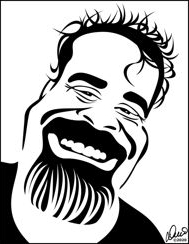3.23 Barber Shop/Bar-Restaurant
This pair of shops was bashed from Branchline Laser Arts #843 Roscoe Store, which originally had three shops. The larger space is a jazz-bar-restaurant; the smaller, a barber shop. Eventually this wound up as the most complex, jam-packed building on the layout, having three motorized animations and multiple lighting effects.
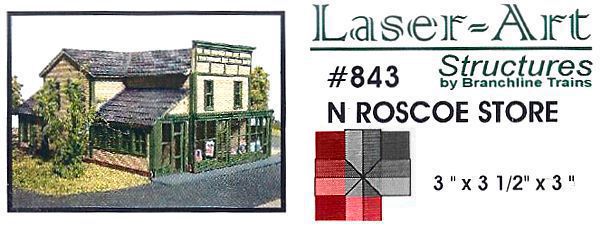
In order to make the kit fit the space, the portions shaded red, above, were removed; consequently, two walls—the right side and back—had to be pieced together. The peak on the right side was removed, and the front half of the second floor was filled in with a piece of blank wall, with two new window openings; the vertical joint will be covered with a piece of trim. Meanwhile, the original false front over the shop was trimmed to match the roofline.

The back wall was pieced together to remove a slot for a lower roof; once again, the joint will be covered with a piece of trim. Also, two window openings were made on the peaked part, since this was originally an internal part.
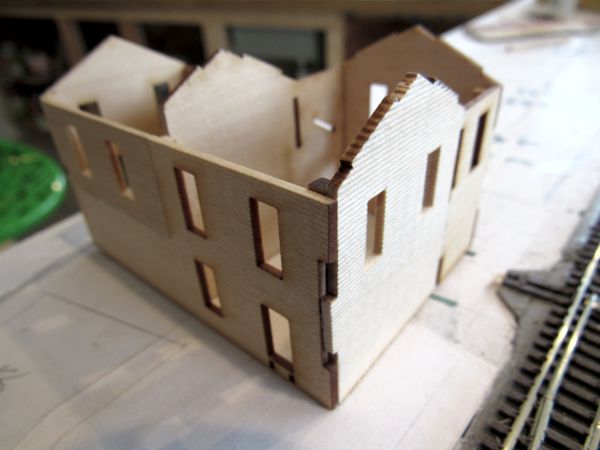
Since the shop windows are quite large, I was of course going to detail the interiors.

Phil's Bayou Another Jazz Bar
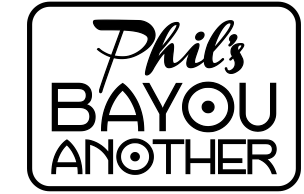 The bar-restaurant got ceiling fans
originally slated for Duthie's Hardware Store, the idea being that moving shadows cast from spotlights behind the
fan blades would give the space some liveliness. The dining tables—all five of them—are the kind with the cast metal base—you know, where you're always stuffing napkins under
one corner to keep it from wobbling. These were made from bits of fine brass tubing soldered to strips of etched brass kit fret, and trimmed
to size.
The bar-restaurant got ceiling fans
originally slated for Duthie's Hardware Store, the idea being that moving shadows cast from spotlights behind the
fan blades would give the space some liveliness. The dining tables—all five of them—are the kind with the cast metal base—you know, where you're always stuffing napkins under
one corner to keep it from wobbling. These were made from bits of fine brass tubing soldered to strips of etched brass kit fret, and trimmed
to size.




I used tubing so I could add warm white 0402 SMD LED "candles" on the tables.
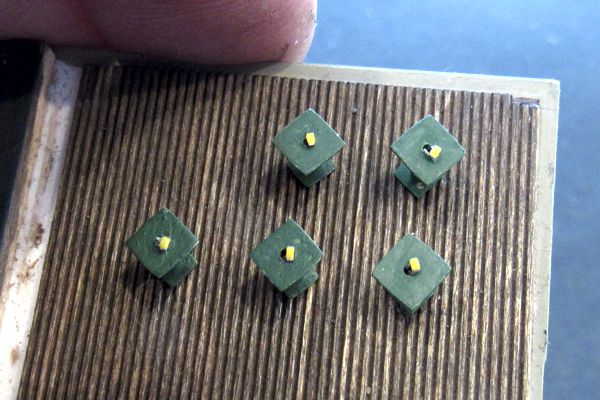
Then I made the bar, which is just strip wood assembled in an L-shape and topped with some black styrene. The stools are just regular straight pins. I also added a tiny stage at the back corner for a jazz trio. (Compare this vuew to the reference image.)

The jazz trio figures (below, upper right) are from wildly different sources: the sax player is from a Preiser marching band; the bass player is a Preiser party waiter; and on drums is a Kato Japanese commuter checking his cell phone. All were modified to varying degrees, repainted, and posed with their instruments. The bass is simply a silhouette whittled from a piece of black styrene. The drum set (researched from 1950s jazz drum sets) is made from various brass tubing, cut and soldered, with Scotch tape as the bass drum skin; cymbals are NGineering lamp shades squashed flat and glued to bits of fine phosphor-bronze wire. Thankfully I didn't need to make a sax and, with a little trimming, the sax player's original band hat neatly became a Porkpie.

The band is illuminated dynamically by spotlights overhead. You'll also notice a row of spotlights over the bar. One little detail that's virtually impossible to see through the windows is the exposed plumbing to the left of the fans. I added this to deal with a construction mistake: a notch in the back wall I was convinced would be visible. Silly me.
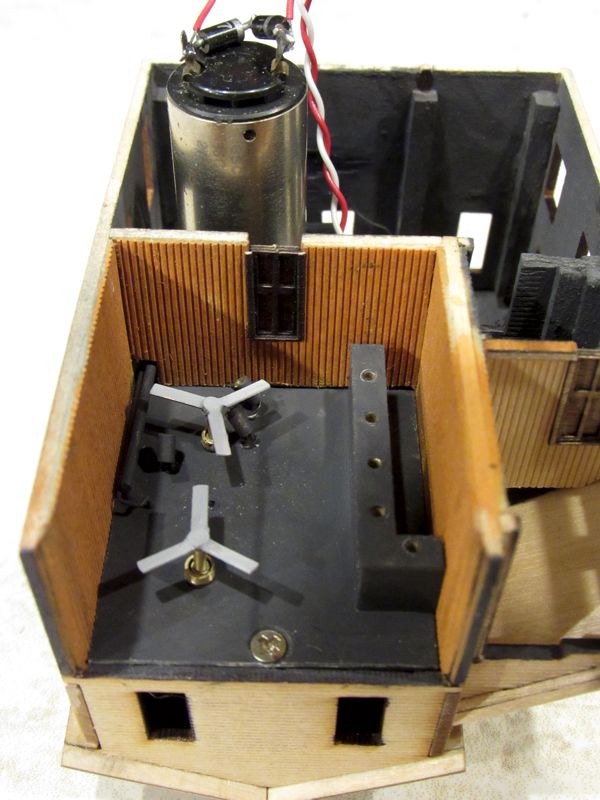
A bar-restaurant needs a lot of glassware, and I devised a way to make tons of glasses very easily and quickly. First, I placed a number of bits of fiber optic on a piece of masking tape. Then I cut the tape into narrow strips with a Chopper. Finally, I picked off the finished "glasses" with a tweezers and glued them in place. It's good that the method produces large quantities of them, because about a third of them flew off the tweezers into space, never to be seen again. It was a little disappointing to find that, being clear, they're very hard to see on the finished model!

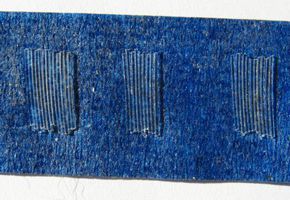


To complete the bar, I added a print of a photograph of the wall behind a bar—I grabbed a dozen or so images off the Interwebs, sized them to fit the space, printed them out on self-adhesive label stock, and chose the one that looked the best. It's small enough that the bottles don't appear oversize.

The final detail was the sign. After rendering it in a drawing program, I printed it on matte presentation paper, glued two copies of it back-to-back, and cut it out. I made a bracket out of a scrap of etched brass filigree, and hung the sign over the door.

Lastly, I built an enclosure for the little MP3 player that would be supplying jazz music for the trio.
Reference Images
Originally Phil's was going to be a bar/pool hall combo (Phil's Balls & Shots), but when I measured the space, it had room for only one pool table with barely enough left for the bar. So, it became a bar/restaurant. I imagined it as very cozy, with just enough room for a half-dozen tables and a jazz trio crammed in the corner. Compare this photo to the model interior, above.
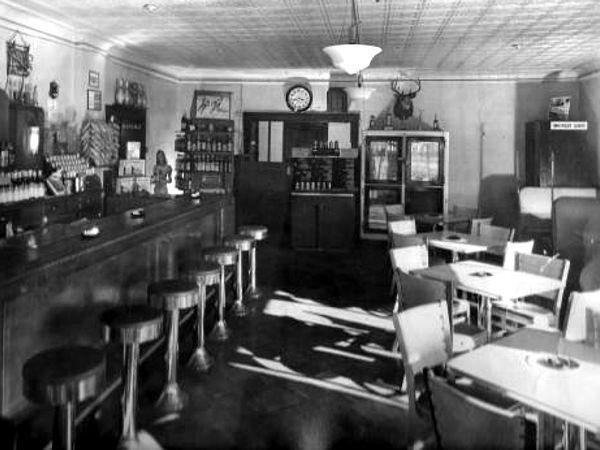
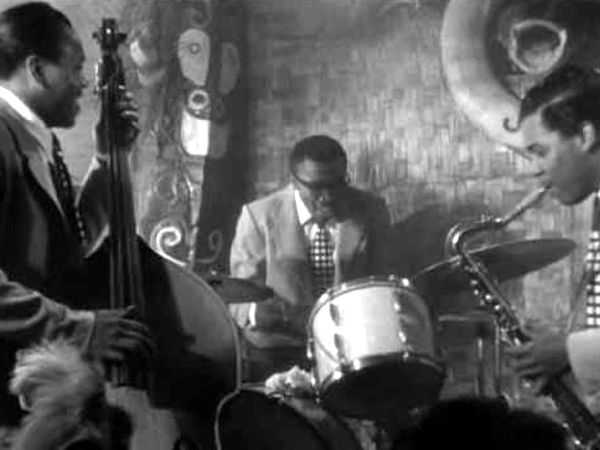
Jim & Glenn's Barber Shop
As I began work on the barber shop, I increasingly disliked the model's giant panoramic window along the side. While it may have been present on the real-life version of the building, it surely didn't work on my model: for one thing, the bottom sill was about five feet off the floor! So, I removed that wall and replaced it with something more appropriate from the scrap box. I also reduced the size of the space, as there was originally enough room for four barbers. Now it's a two-man shop with its own bathroom/closet. Before, below left; after, below right.
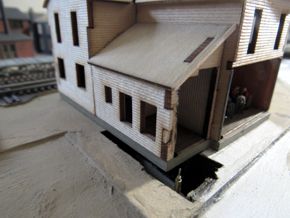
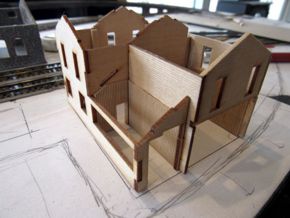
I used the same trick as I had for the bar background: I printed out color photos of barber shop interiors, and picked the best-looking one.

For lighting, I made a pair of pendant "Circline" fluorescent lights by slicing bits of styrene tube and gluing them onto SMD LEDs. The shop has a working barber pole, of course, plus an unusual bonus: an animated barber chair.
Reference Image
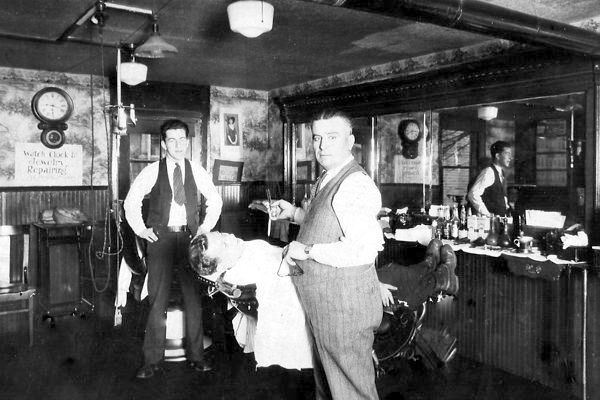
That's Glenn on the left and Jim on the right (the victim is unknown). And here's some artwork for posters—

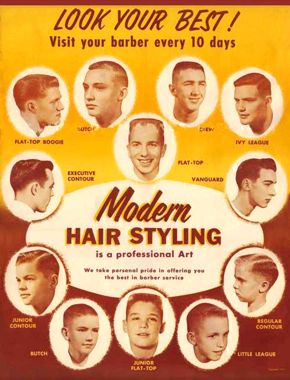
Named For...
Jim and Glenn are members of a volunteer organization where I was a member for quite a few years—I only left because of my health. Railwire friend Phil Hoffman (below) has been a huge emotional support for me. He lives in Mississippi on the Gulf Coast, so "Bayou Another" made for an appropriate little joke.
